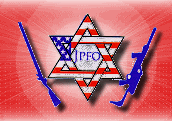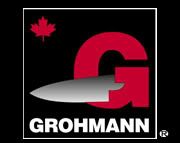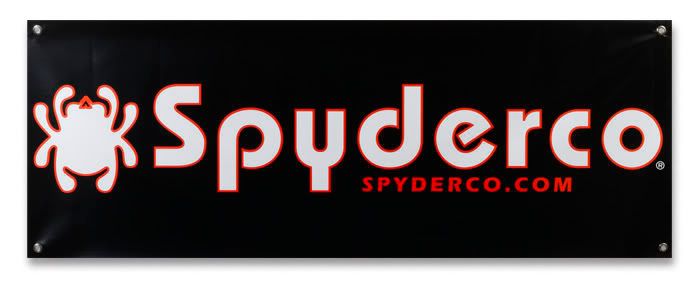My recent discussions about Pyrodex and incidents of corrosion associated with that powder spun off into another discussion about Triple 7 powder. Also made by Hodgdon (as most powders sold in the U.S. are), this is what the manufacturer says about it:
Triple Seven® is a revolutionary black powder substitute that cleans up with water alone...even your hands will come clean with just water. You won’t have to worry about any strong smells either...that and the time-consuming clean-up are both eliminated when you shoot Triple Seven. Triple Seven granular powder even delivers higher velocity for flatter, more accurate shooting. Triple Seven Pellets, are designed to have the same velocity as the famous Pyrodex Pellet, so switching over to the quick cleaning Triple Seven Pellet is amazingly easy. Clean up with water, no smell, and with the powder, flatter, more accurate shots. You get it all with Triple Seven. Now available in granulated powder; 50 caliber, 50 grain Pellets; and new 50 caliber, 30 grain and 45 caliber, 50 grain Pellets. Triple Seven Pellets provide the modern muzzleloader fast, no spill, easy loading with instant ignition.

Hodgdon also has this nifty chart (seen to the left) comparing velocities with Triple Seven and other muzzleloading powders.
My recent discussions about Pyrodex and incidents of corrosion associated with that powder spun off into another discussion about Triple 7 powder. Also made by Hodgdon (as most powders sold in the U.S. are), this is what the manufacturer says about it:
Triple Seven® is a revolutionary black powder substitute that cleans up with water alone...even your hands will come clean with just water. You won’t have to worry about any strong smells either...that and the time-consuming clean-up are both eliminated when you shoot Triple Seven. Triple Seven granular powder even delivers higher velocity for flatter, more accurate shooting. Triple Seven Pellets, are designed to have the same velocity as the famous Pyrodex Pellet, so switching over to the quick cleaning Triple Seven Pellet is amazingly easy. Clean up with water, no smell, and with the powder, flatter, more accurate shots. You get it all with Triple Seven. Now available in granulated powder; 50 caliber, 50 grain Pellets; and new 50 caliber, 30 grain and 45 caliber, 50 grain Pellets. Triple Seven Pellets provide the modern muzzleloader fast, no spill, easy loading with instant ignition.
In researching on-line I found a little information. Randy Wakeman writes,
Triple Seven and Black Mag3 are far hotter (or more energetic) than good old black powder, and produce higher velocities and pressures. Still burning carbon, the carbon-based fuel burned here is from the sugar family, not from wood (charcoal). These propellants are actually far more modern than nitrocellulose based powders. Triple Seven and Black Mag3 only become available in the 21st Century.and in an article specifically about Triple Seven,
Referring to Triple Seven and Black Mag3, the only thing that they have in common with black powder is they can be volumetrically measured with old black powder measures. They are not as corrosive as black powder (Black Mag3 claims to be non-corrosive), have little in common chemically, and produce more pressure, heat, and velocity than black powder. They are considered smokeless powder by the DOT, and should be used with caution in older muzzleloaders, as there is no way that 100 grains volumetric charge of Triple Seven or Black Mag3 can be considered "the same" as traditional black powder. They are still relatively inefficient propellants, leaving behind close to 50% of their mass as non-combusted, solid residue.
Referring to Triple Seven, that 50% unburned material is substantially less fouling than black powder for the simple reason that a 100 grain volumetric charge of Triple Seven, though it produces more energy than black powder, is far less by actual weight. More directly stated, you still have about 50% of the garbage left, but you start with less garbage to burn in the first place.
One complaint, largely unfounded, is the hard fouling produced by Triple Seven residue. All blackpowder, Pyrodex, and Triple Seven charges leave behind a large percentage of solid residues. If you spit-patch between shots, there has been little issue with Triple Seven. Only one rifle has even given me a "Triple Seven Crud Ring," of any note, and that is the .45 caliber G2 Contender. When spit-patching that rifle, it really does have a hard sugary "crunch" when nearing the breechplug, and I don't know why.and continues
Though Hodgdon touts the "easy water clean-up," I've not found Pyrodex clean-up to be all that stressful. I like the less felt recoil for a given velocity with Triple Seven loose powder compared to Pyrodex and similar, and I like the added performance from a 90 to 100 grain loose powder charge. Though Hodgdon does not claim Triple Seven as "non-corrosive," it is less corrosive than either blackpowder or Pyrodex. As I always hunt with a fouled bore for accuracy reasons, it is a little extra cushion not present with Pyrodex use.
I also found this article by Sam Fadala. I like Mr. Fadala's work and have found most of his results repeatable, i.e. believable. He says
Triple Seven is so close to non-corrosive that this new powder requires little additional after-shooting effort than modem cartridges demand. The only solvent necessary to remove Triple Seven fouling is [H.sub.2]O -- plain old tap water, preferably hot to promote drying.and
I can say after purposely firing multiple consecutive shots without swabbing the bore (under test conditions) that hot water slicked the rifle up to brand new in a few short minutes. The effort required to remove Triple Seven fouling was little more than I lavish on my favorite smokeless powder cartridge guns.This implies that corrosion isn't a problem with Triple Seven.
But what about pressures? After all, if velocities are noticeably increased, pressures must be higher as well, right? Well, that's about all anyone says. I haven't found any numbers on the subject yet. I will.
Unfortunately, I've yet to find more references. I'll update when I do.






















1 comment:
While the article you sited disputed the "crud ring"-- people in the real world have it happen all the time. Toby bridges in High Performance Muzzleloading states--"When using standard strength No. 209 shot-shell primers for ignition, charges of Triple Seven tend to leave a hard, cursty ring in the bore, just about where the saboted bullet seats over the powder charge..This "crud ring", as shooters have come to call it, prevents the shooter from seating the projectile in the exact same spot shot after shot."
I have always gotten the crud ring. I now use Blackhorn 209 in my Encore ml pistol. I also use Blackmag3-no wiping, no crud ring, very good velocity.
You mentioned Randy Wakeman-lots of good articles by this man-one is http://www.randywakeman.com/bh209.htm -about Blackhorn 209. Toby Bridges-well known ml hunter has this comparison-http://www.hpmuzzleloading.com/SpecialReport2.html
I also use a Savage ml with smokeless powder. I would never consider using 777 in it but I wouldn't hesitate to use the other 2. One final note-I have allergies and blackmag3 and blackhorn are the only ones that don't bother me.
ps. your blog on 357 max has been very helpful, thanks John Mabrey
Post a Comment